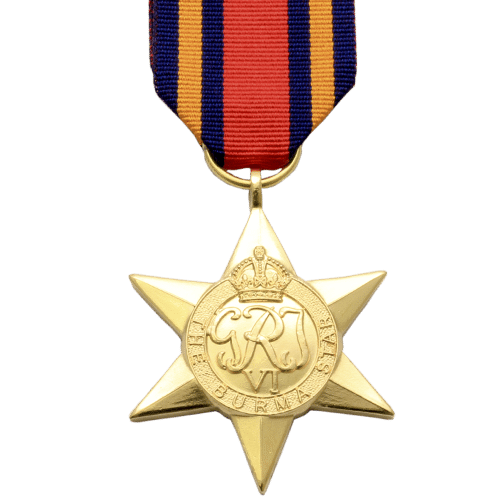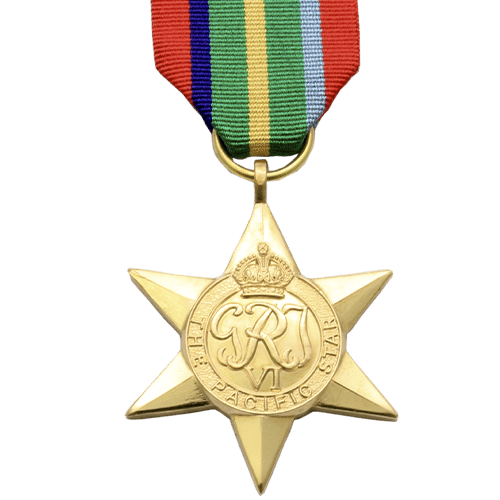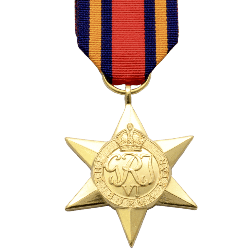The Long Range Penetration Group, who took the name of the ‘Chindits’ after the famous griffins guarding Burmese temples. The Chindits was part of the British 14th Army, also known as ‘The Forgotten Army’ and was assembled by renowned British Army Officer, Orde Wingate and was used to plan and carry out guerrilla warfare and long-range infiltration, deep behind Japanese lines. Orde Wingate, their commander, had already emerged in Palestine and later Abyssinia as a genius of guerrilla warfare, and had been specially selected for a new task by Field-Marshal Wavell. He chose mixed detachments of Gurkhas and British troops for expeditions. The latter were aged between 28 and 35 – mostly married men from the North of England. Wingate trained them in jungle warfare, river crossing and long forced marches, until they were moulded into shock troops ready for anything. Mule transport had to be used as well as elephants.
The circumstances which brought Wingate to India were these. On January 30, 1942, when the Japanese were poised for their attack on Burma, the War Office signalled General Wavell, Commander-in-Chief India, offering his services, as he had carried out guerrilla operations in Palestine and Abyssinia with great success, and it was thought that there might be a role for him in Burma or China. Wavell knew Wingate well: the previous year, when GOC Middle East, he had thought of court-martialing him for insubordination. Fortunately, he had a man to man talk with him instead and grew to appreciate his qualities which (as he put it) were ‘brilliant if unorthodox’.
Wingate arrived as a Major in March and (after immediate promotion to Colonel) was sent to Maymyo with instructions to take command of all guerrilla operations in Burma, where by now the British were in full retreat.
His basic theory was that in a jungle covered terrain formations could remain behind the enemy lines for indefinite periods, supplied from the air. These formations, he believed, would pay enormous dividends, as each man inserted into the enemy’s supply system would be worth a hundred in the battle zone. The troops employed on such operations should operate as columns, each column being large enough to inflict a heavy blow against the enemy – but small enough to evade action when outnumbered.
By January 1943 the question as to when and how Wingate and his men should be employed came under consideration and whether it should be employed at all. Wingate then proposed that the Long Range Penetration operation should still proceed, but now alone, to test the theory and gain vital experience of such jungle operations, and to test the Japanese and disrupt their planned offensives.
General Wavell agreed to this and the Chindits were ordered into Burma. The campaign was given the code name Operation Longcloth and on the 8th February 1943, 3,000 Chindits advance into Burma from Imphal.
“Today we stand on the threshold of battle. The time for preparation is over, and we are moving on the enemy to prove ourselves and our methods…. We need not…. as we go forward into the conflict, suspect ourselves of selfish or interested motives. We have all had the opportunity of withdrawing are we are here because we have chosen to be here… we have chosen to bear the burden and heat of the day” – Orde Wingate
The Chindits crossed the Chindwin River on 13th February and faced the first Japanese troops two days later. Not until there had been a number of engagements with Japanese outposts and patrols and the demolition of railway bridges did the Japanese realise the force was of brigade strength The Chindits were beginning to hurt the enemy. The Japanese had been caught by surprise and were confused, not knowing the intention of the Chindits or how they were supplied. In numerous jungle clashes they killed at least 200 Japanese; and a whole division of 15,000 men was kept busy hunting them trying to prevent reaching the Lashio railway.
On many occasions, the Chindits could not take their wounded with them; some were left behind in villages. Wingate had, in fact, issued specific orders to leave behind all wounded, but these orders were not strictly followed. Since there were often no established paths in the jungle along their routes, many times they had to clear their own with machetes.
On 24th March Wingate was ordered to withdraw. By the end of April after a 3-month mission of the 3,000+ officers and men that went into Burma only 2,182 came back four months later having covered between 1,000 and 1,500 miles deep in enemy held territory. They were in poor condition, suffering from tropical diseases and malnutrition but in high spirits and proud of their achievements. Of those that returned only about 600 were passed fit for further active service. Of the remaining men, Wingate practically hand picked those few he would retain, while the rest were put back under the normal army command structure as part of their original battalions.
“Chucks of buffalo meat. Occasionally, a piece of python, and rice, endless rice. This was the food we lived on as we hacked our way back to India during the next few weeks. Our beards grew long and we were tattered and filthy. As we marched through night after night, using jungle darkenss as extra cover against the Japanese, we became desperately weary….We got back in dribs and drabs. – James “Mad Mike” Michael Calvert DSO and Bar
Orde Wingate had proved his theory of Long Range Penetration by his ‘Chindits’ could work and that allied troops could raid effectively behind Japanese enemy lines and valuable lessons were learnt on the use of mules, the importance of radio communications and most importantly they proved the success of using RAF air supplies for maintaining such operations in the jungle. This had not been tried before and the experienced gain proved later to be invaluable.
Many criticised operation Longcloth noting that far too many men were sacrificed on this mission for achieving so little. Ordr Wingate, however, argued that the morale boost achieved by this operation could not be easily measured.
The leader of the Chindits, General Wingate, was killed a few weeks after the launch of this ‘Operation Thursday’ in March 1944. The mission was successful and helped greatly towards the Japanese surrender.
Search Japanese Prisoner of War records
Many British and Allied military personnel were imprisoned in Japanese Prisoner of War camps, forced to live in appalling conditions starved, worked and beaten to death. The humanitarian terms of the Geneva Convention were largely ignored by the Japanese. Forces War Records understand that it can be hard to find information regarding Japanese Prisoner of War records so we’ve worked hard to provide a vast Japanese Prisoner of War database. The fully searchable database includes a list of World War II British Army prisoners of war (POW) and you can search by name, rank, service number, regiment, POW Number, Camp Type, Camp Number, Camp Location and notes. And to help you even further in your search you’ll also find a helpful tutorial on our site.
The Burma Star & Pacific Star campaign medals.
The Burma Star (left) and the Pacific Star with Burma Clasp (right) were alternative awards given during the Far Eastern campaign. Personnel who by their service qualified for both stars were awarded only the campaign star for which they first qualified: they were however, given a clasp to show their entitlement to the second award.


The Burma Star was awarded for one day or more of operational service during the Burma Campaign between the 11th December 1941 and the 2nd September 1945.
The Burma Star medal ribbon is dark blue overlaid with a central red stripe to represent the Commonwealth Forces and two narrow stripes of bright orange to represent the sun.
The Pacific Star medal ribbon has a stripe of green bisected by a central narrow yellow stripe to symbolize the forests and beaches of the Pacific, one stripe of dark blue and one of light blue with red edges to represent the three services of the Navy, Royal Air Force and the Army. The medal is worn with the dark blue stripe furthest from the left shoulder.
The basic medals issued to soldiers who served in Burma were the Burma Star, the 1939-45 Star, the Defence Medal and the War Medal 1939-45.
Holders of the Burma Star or the Pacific Star with Burma Clasp are entitled to be members of the Burma Star Association.
Sources – Forces War Records Historic Library / Wikipedia / Chindits.info

